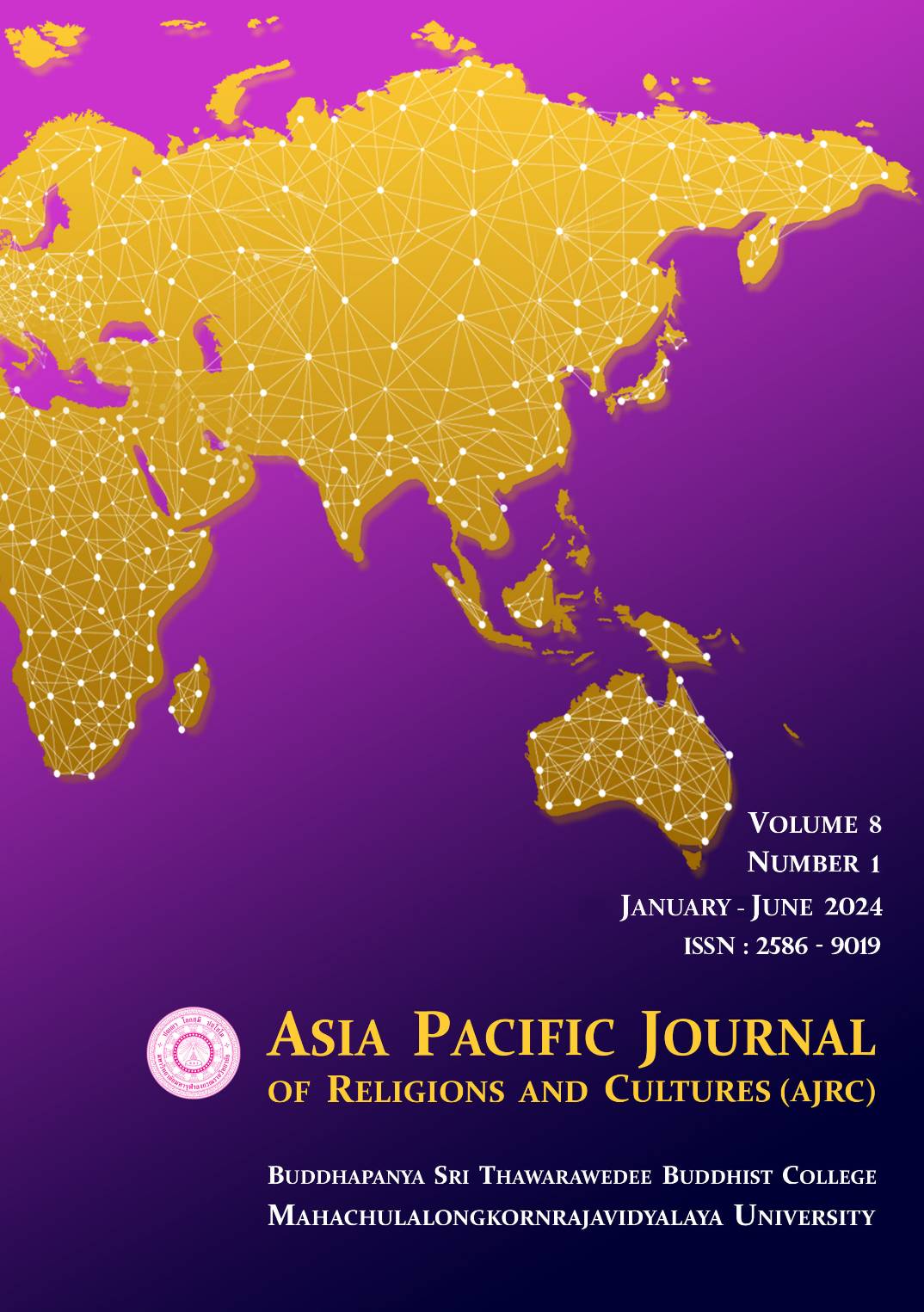Harmony Amid Diversity: Navigating the Possibilities and Challenges of Interfaith Dialogue for Peacebuilding in Chiang Mai, Thailand
Main Article Content
Abstract
Religious diversity, a prevalent aspect of Northern Thai society, can either serve as an opportunity for peaceful coexistence or pose a potential threat and trigger conflict. This study delves into the subtle landscape of interfaith dialogue, exploring both its benefits and barriers in the context of advancing peacebuilding efforts among faith practitioners. Conducted through a combination of fieldwork and literature research, this study sheds light on the multifaceted dynamics that shape interfaith interactions in Chiang Mai, Thailand. The fieldwork component involved informal dialogues with religious leaders and participants engaged in interfaith initiatives, complemented by observations conducted in Chiang Mai between the period of 2022-2023. The findings of this study reveal that interfaith dialogue initiatives have played a pivotal role in fostering harmonious relationships among diverse religious communities in Chiang Mai Thailand. The benefits derived from interfaith dialogue initiatives are manifold. Notably, they include the enhancement of cooperation and unity among religious groups, the cultivation of a culture of positive peace, education in breaking barriers, and personal and societal impact among others. However, challenges also emerge, such as organizational and structural in nature, social and cultural dynamics, attitudinal barriers, and preconceived ideas. In conclusion, this study emphasizes that effective societal change necessitates ongoing dialogue. Beyond dispelling religious preconceptions, addressing structural violence and cultural discrimination through open conversation is imperative for all parties involved. Further, a recommendation proposes the inclusion of representatives from all religions in the Chiang Mai Interreligious Relation Committee, fostering a more inclusive and representative platform for interfaith cooperation.
Article Details

This work is licensed under a Creative Commons Attribution-NonCommercial-NoDerivatives 4.0 International License.
References
Bagir, Z. A. (2007). Interfaith Action for Peace and Security: Challenges
and Opportunities. 3rd Asia Pacific Regional Interfaith Dialogue, Waitangi, New Zealand.
D’Ambra, S. (2019). Interreligious Dialogue. QC, Phil.: Claretian
Communication Foundation.
Fleming, K. (2014). Buddhist-Christian Encounter in Contemporary
Thailand (New edition). Peter Lang GmbH, Internationaler Verlag der Wissenschaften.
Garfinkel, R. (2004). What Works? Evaluating Interfaith Dialogue Programs
[Special Report]. United States Institutes of Peace. https://www.usip.org/publications/2004/07/what-works-evaluating-interfaith-dialogue-programs.
Headley, W. (2020). Interreligious Dialogue as a Peacebuilding Tool in
Conflict Situations. Spiritan Horizons, 15(15). https://dsc.duq.edu/spiritan-horizons/vol15/iss15/9.
Hoffman, L., & Thelen, M. (2014). Interfaith Dialog. In D. A. Leeming (Ed.),
Encyclopedia of Psychology and Religion (pp. 880–881). Springer US. https://doi.org/10.1007/978-1-4614-6086-2_809.
Lederach, J.P. (2005). The Moral Imagination: The Art and Soul of Building
Peace. Oxford, UK: Oxford University Press. DOI. http://dx.doi.org/10.1093/0195174542.001.0001.
Little, D. R., & Appleby, S. (2004). A moment of opportunity? The promise of
religious peacebuilding in an era of religious and ethnic conflict. In H. Coward & G. S. Smith (Eds.), Religion and peacebuilding. State University of New York Press.
Merdjanova, I. (2016). “Overhauling Interreligious Dialogue for
Peacebuilding,” Occasional Paper on Religion in Europe 36 (1) George Fox University. Available in https://digitalcommons.georgefox.edu/cgi/viewcontent.cgi?referer=&httpsredir=1&article=1958&context=ree.
Merdjanova, I.& Brodeur, P. (2009). Religion as a Conversation Starter:
Interreligious Dialogue for Peacebuilding in the Balkans. NY; Continuum International Publishing Group.
Neufeldt, R. (2011). “Interfaith dialogue: Assessing theories of change”. Peace
& Change 36(3): 344–372.
Phongphit, S. M. (1984). The Impact of Interreligious Dialogue in Thailand.
Inter-Religio 5. https://so03.tci-thaijo.org/index.php/HRPS/article/view/261241.
WCC. (2016). Called to Dialogue Interreligious and Intra-Christian Dialogue in
Ecumenica lConversation. https://www.oikoumene.org/en/resources/documents/wcc-programmes/interreligious-dialogue-and-cooperation/called-to-dialogue/.
World Faith Development Dialogue. (2019). Thailand Country Profile On
Freedom of Religion or Belief. https://www.scribd.com/document/642956544/Thailand-Country-Profile-on-Freedom-of-Religion-or-Belief-1-pdf
Yacovone, A. (2012). Interfaith Dialogues: A Method to Promote Peace in
Southern Thailand. Scientia et Humanitas, 2, 23–38.
Yunyasit, S., & Baybado, P. (2022). Interreligious Dialogue in Thailand and
the Philippines: Overview, Trends and Trajectories. Journal of Human Rights and Peace Studies, 8(1). https://so03.tci-thaijo.org/index.php/HRPS/article/view/261241.


